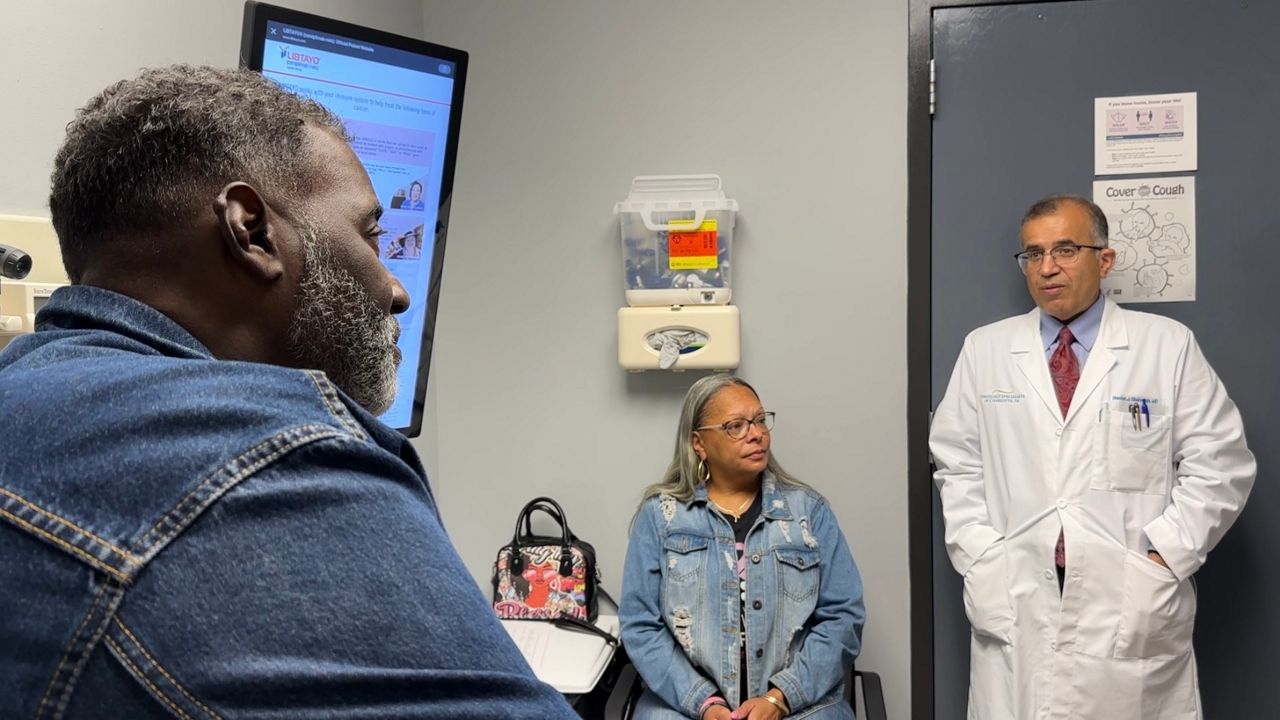CHARLOTTE, N.C. — The 2023 Alzheimer’s Disease Facts and Figures report put an eye-opening number on the cost of care for families and friends of Alzheimer’s patients, both in the United States and North Carolina.
For the first time, the study put a quantified number on the burden of caring for a loved one with the disease, both in terms of "unpaid" health care hours and emotional and physical strain.
But, for the people who provide support for families suffering Alzheimer’s, and the families themselves, the report’s findings are not a surprise.
“The burden financially not only on the family itself, but also on our health care systems, on Medicare and Medicaid, the cost to our national budget when it comes to this disease. It is affecting everyone from the top down, to the individuals that are impacted,” said Christine John-Fuller“The burden financially not only on the family itself, but also on our health care systems, on Medicare and Medicaid, the cost to our national budget when it comes to this disease. It is affecting everyone from the top down, to the individuals that are impacted,” said Christine John-Fuller, the vice president of communications for the Alzheimer’s Association Western Carolina chapter.
In her office while discussing the report’s data, John-Fuller said while the numbers were calculated for the first time, they were not surprising given the scores of personal testimonials the association has heard for years.
“New information that we’ve actually never had for North Carolina,” John-Fuller said about the study’s numbers.
The report says North Carolina caregivers provided 533 million hours of unpaid care in 2022, which would have cost traditional health care providers $8 billion. Forty-one percent of those caregivers reported depression and nearly 59% reported their own chronic condition, according to the study. Overall, 18% reported, “Frequent poor physical health.”
For Katharine Fuchs, the report’s numbers reflect a sad, personal family story.
“He just was never the same person again and wasn’t taking care of himself. Depression can cause you to do all sorts of things,” Fuchs said, while looking at pictures of her father. “He just started going down this path. Once she passed away, he just wasn’t the same again. In 2021, he was having a lot of back pain, got an infection and then they tried to do some surgery to fix it and he passed away.”
Her father, Robin, spent years as a caretaker for her mother, Barbara. Barbara was first diagnosed with early onset Alzheimer’s in 2011.
“We just didn’t know how to tell her we think this is what’s happening, because once you tell someone, it’s a really awful reality,” Fuchs said about the early days of her diagnosis.
For more than five years, her father acted as her mother's primary caregiver. He drove her to appointments and errands, cooked her meals and provided all her other care. For much of the time, Fuchs said her father was also still working.
“I mean, when you have someone with Alzheimer’s living at home, you don’t have any time,” Fuchs recalled.
In her Charlotte home, Fuchs is surrounded by pictures of her parents and other family. Her love of photos comes from Robin, who worked as a commercial photographer in New Orleans, then Asheville.
“When we moved to Asheville, he started taking pictures of people. I just love pictures. And I think part of that is because, if I get Alzheimer’s, I want to be able to refer back to things,” Fuchs said.
The disease ended up taking both parents from Fuchs, who says her father suffered depression privately and struggled to take care of himself as her mother's condition worsened. In just three years time, Fuchs lost both her mom, then her dad. There is no doubt in her mind, Alzheimer’s killed both of them.
“I got about three years with him, but he wasn’t the same,” Fuchs said.
Alarmingly, Fuchs’ story may become more common as the 2023 Alzheimer’s Disease Facts and Figures report estimates the number of adults suffering Alzheimer’s will increase 30,000 by 2025. As of 2020, the report estimates 180,000 adults in North Carolina suffer from Alzheimer’s dementia.
John-Fuller said the expected five-year increase is due to two main causes, an aging baby-boom population and better diagnostic tests for the disease, which leads to better accounting for its impact on the population.
You can read the full report, here.
The report also states North Carolina will need another 400 geriatricians to treat just 10% of adults 65 years and older by 2050. To serve 30% of the state’s seniors by 2025, North Carolina would need another 1,500 geriatricians.
“We not only have shortages now, but we also are going to have even more critical shortages as we grow,” John-Fuller said. “We’ve got a lot of work to do, to make sure that we even have the people in place to take care of the individuals that are going to be diagnosed.”






